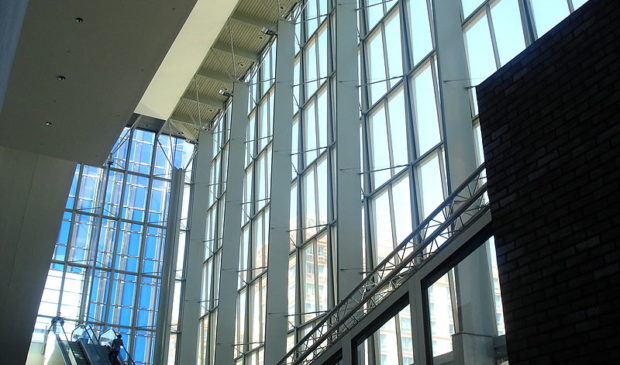Real estate leaders, developers eye start of proposal process for convention center project
Wednesday, June 1, 2022 by
Chad Swiatecki Leaders in Austin’s real estate and development community learned plenty about the planned expansion of the Austin Convention Center during a panel discussion last week, but they were left waiting as to when the contracts for design, engineering and contracting work on the facility will be released for proposals and bidding.
The May member breakfast discussion for Urban Land Institute Austin focused entirely on the $1.2 billion expansion that will see the current facility torn down and rebuilt with exhibit hall space and loading docks contained underground and meeting and banquet space located above street level, with a mixed-use private development component located on its southern end.
When an audience question specifically asked for when professionals in architecture, engineering and construction would have an opportunity to vie for the contracts, Austin Convention Center Department Director Trisha Tatro only offered that the request for qualifications for design and engineering work would be released “in the future here shortly,” suggesting that process is still moving at an inexact pace. Tatro said the request for proposals for construction on the project would quickly follow that RFQ, and that the 12-to-18-month design process is expected to begin early next year. Depending on how the eventual contractors decide to phase the project, the teardown and reconstruction is expected to last from four to seven years.
At the end, the facility will have 709,000 square feet of rentable space for conventions, exhibits and other business events, far more than the current 376,000 that stakeholders say is too small for Austin to be competitive for major event business.
Tom Noonan, president and CEO of Visit Austin, said the convention center is the 48th-largest in the U.S., putting it well behind facilities in smaller and less economically active cities. And with expansions planned for centers in Dallas, Houston and Arlington – as well as out-of-state metros such as New Orleans – he said the Austin hotel industry is pushing hard to do whatever it takes to bring more business bookings to the area to use rooms on slow weekday nights.
“How many industries do you know who say ‘Tax me more,’” Noonan said, explaining that hotels will create a public improvement district with a 1 percent tax levy on their revenue to generate more than $10 million annually to promote Austin and pursue more convention business.
“They know we need a larger building downtown to fill downtown and get that compression in the city, so not only does the hotel industry do better but so do other business segments downtown,” he continued. “Part of my job is to grow the amount of hotel tax, and when that happens the arts community benefits from it and the heritage (tourism) industry is better for it to fund the things Austinites love.”
Panelist Sheryl Sculley, a former city manager in San Antonio and top city executive in Phoenix and Kalamazoo, Michigan, said the public-private partnership component of the new convention center will need to be handled carefully to take maximum advantage of the real estate and other significant public works projects taking place nearby at the same time.
“There would have to be extensive market analysis to determine what the needs are and where there are market opportunities for expansion,” she said. “If I can be brutally honest, I haven’t met a city that was great at retail, and so there would have to be experts that would assist the city in any kind of private-sector development associated with the project.”
While the initial plan called for a westward expansion onto three-and-a-half blocks of private property, that approach had to be abandoned last spring when land purchase negotiations failed to produce financially acceptable deals.
Responding to a question about the life span of the reconstructed facility, Tatro said the focus on growing vertically will allow for more renovations if needed over the planned 30-year life of the building.
“We are making sure as we design the facility that there will be opportunities to expand vertically in the future. The one great downfall of the current convention center is it’s a columnless exhibit hall space,” he said. “Early on, that was important for the customers, but because there are no columns there is no way to expand on this center in a vertical way. Structurally, the facility could not handle that, which is part of why we’re in the situation we face today.”
Photo by Non-dropframe at English Wikipedia, CC BY 3.0, via Wikimedia Commons.
The Austin Monitor’s work is made possible by donations from the community. Though our reporting covers donors from time to time, we are careful to keep business and editorial efforts separate while maintaining transparency. A complete list of donors is available here, and our code of ethics is explained here.
You're a community leader
And we’re honored you look to us for serious, in-depth news. You know a strong community needs local and dedicated watchdog reporting. We’re here for you and that won’t change. Now will you take the powerful next step and support our nonprofit news organization?











